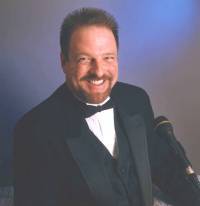




3853 Atlantic Ave.

|
Click here |
LB May See Leonid Meteor Shower Midnight-5 a.m. Tues.,
(Nov. 18, 2003) -- If it's clear overnight, NASA says LB may see part of the Leonid Meteor shower for roughly five hours between midnight and 5 a.m. on Tuesday Nov. 19...with hourly counts of between 10 "shooting stars" per hour in darker suburban areas to about three per hour in brigher urban parts of the city.
Further info: Leonid Meteor Shower Estimator
Here's some of the basic background info from the site:
Meteors are better known as "shooting stars": startling streaks of light that suddenly appear in the sky when a dust particle from outer space evaporates high in the Earth's atmosphere. We call the light phenomenon in the atmosphere a "meteor", while the dust particle is called a "meteoroid".
Size: Most visible Leonids are between 1 mm and 1 cm in diameter. For example, a Leonid meteor of magnitude +5, which is barely visible with the naked eye in a dark sky, is caused by a meteoroid of 0.5 mm in diameter and weights only 0.00006 gram.
Speed: That tiny particle can cause a light so bright that it can be seen over distances of hundreds of kilometers. The reason is the astronomical speed of the meteoroids. Just before they enter the Earth's atmosphere, Leonid meteoroids travel at 71 kilometers per second, or some 2,663 times as fast as a fast pitch in baseball, or, if you want, around the Earth in 3.8 minutes!
Source of light: When meteoroids enter the Earth's atmosphere, they collide with numerous air molecules. Those collisions sputter away the outer layers of the particle, creating a vapor of sodium, iron and magnesium atoms. In subsequent collisions, electrons are knocked into orbits at larger mean distances from the nucleus of the atoms. When the electrons fall back to their rest positions, light is emitted. This is the same process as in gas discharge lamps.
Colors of meteors: The color of many Leonids is like the color of our sodium discharge lamps. For the same reason: meteoroids contain traces of sodium. The color of a meteor is an indication of its composition and the excitation temperature: sodium atoms give an orange-yellow light, iron atoms a yellow light, magnesium a blue-green light, calcium atoms may add a violet hue, while silicon atoms and molecules of atmospheric nitrogen give a red light.
Sounds: Meteors do not normally cause audible sounds. Hence, they will pass by unnoticed if not seen. But watch out for hissing sounds that have been reported for very bright meteors. These sounds are thought to be due to very low frequency (VLF) radio waves interacting with the local environment. A sonic boom is sometimes heard for very bright Leonid meteors, called fireballs, that appear near your own observing site high in the sky. If the particle is larger than the mean free path of the air molecules, a high Mach number shock wave forms in front of the meteoroid. Very rarely, this shock wave penetrates deep enough in the atmosphere that it can be heard. It sounds like the sonic boom of an airplane, but as a distant rumble.
Further info: Background facts on meteors & meteor showers.
|